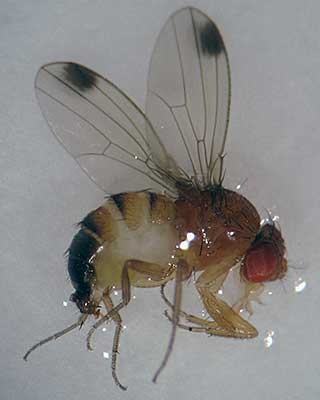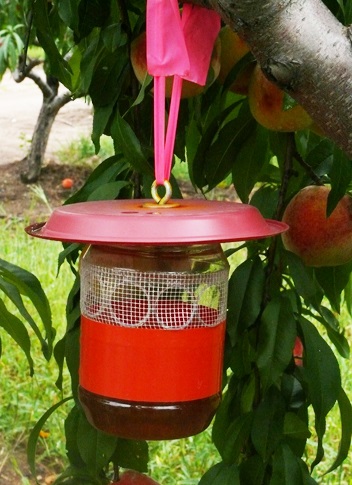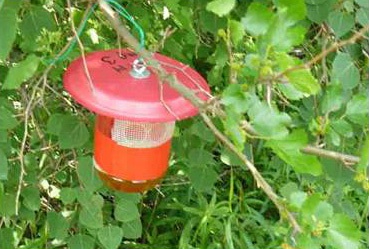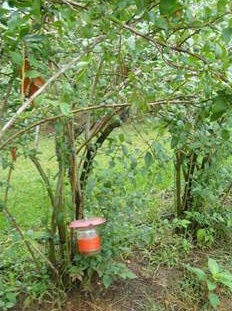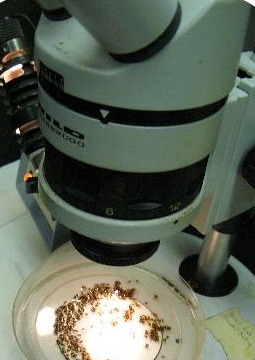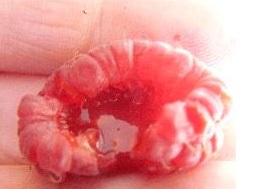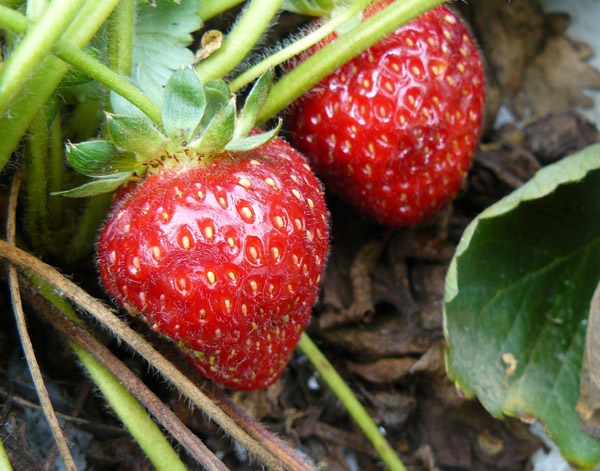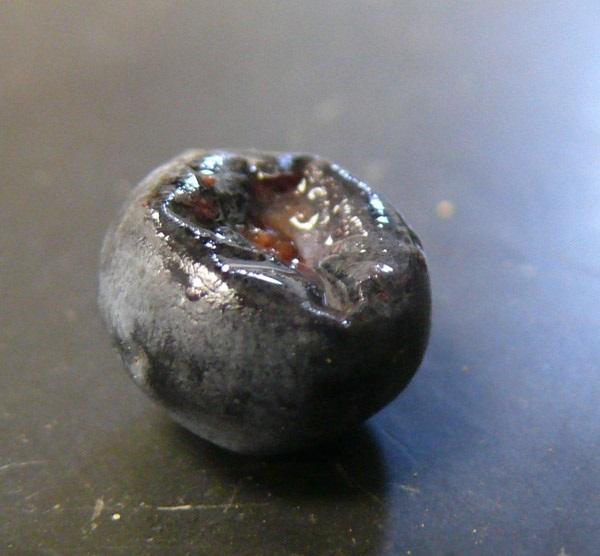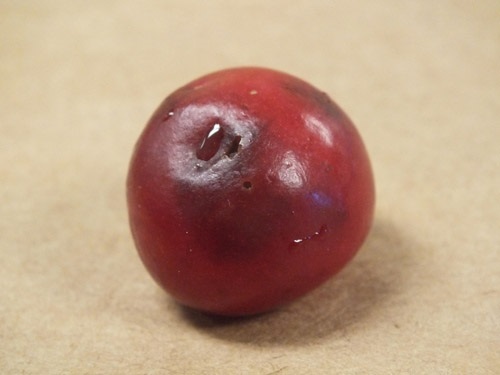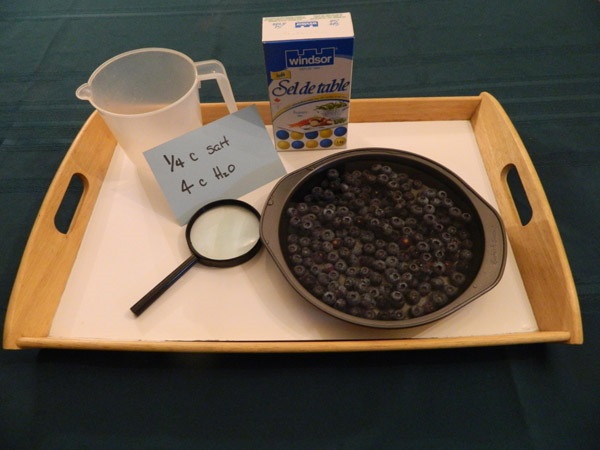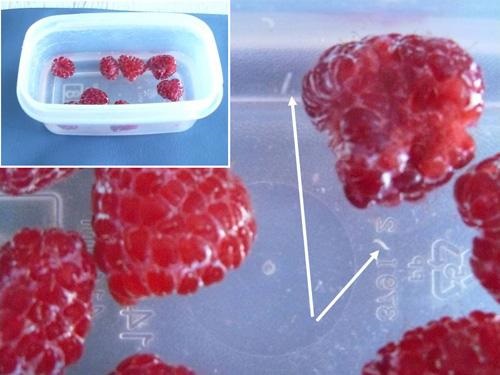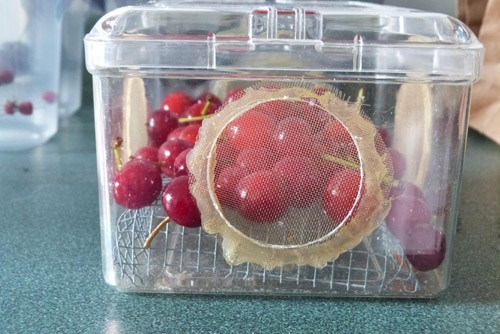Monitoring for spotted wing drosophila in Ontario
Learn how to identify, thresholds for and how to monitor for spotted wing drosophila.
Introduction
Spotted wing drosophila (SWD) is an invasive vinegar fly that has the potential to cause extensive damage to many soft-skinned fruit crops, including cherries and most berries. Surveys since 2011 indicate SWD is present in all Ontario fruit-producing regions (from Windsor to New Liskeard to Ottawa) each year.
Based on experiences in western North America, we expect SWD will become a chronic pest to deal with in years to come. Early detection is the key to limiting economic damage. Growers are encouraged to monitor for SWD on their farms, and to initiate control measures when SWD is detected in their region.
Monitoring includes trapping for adults, examining fruit for damage, and using salt water tests to check for larvae in fruit. For more detailed information on SWD, see Ontario.ca/spottedwing.
Trapping for adult SWD
Growers and scouts can monitor for the presence of SWD adult flies by placing baited traps in susceptible crops and checking the contents once or twice a week. Trap design is an area of active research. You can purchase pre-made traps or make your own (Figure 1). Experience to date suggests that homemade traps are effective. Traps should have lids to keep out rain and be sturdy enough to withstand wind. Traps can be made with plastic containers (250-750 mL) with tight fitting lids, such as 500 mL deli cups. Drill or punch out many small holes, 3-4 mm in diameter, in the sides of the containers, which will exclude larger insects but allow vinegar flies to enter. Make two more holes across from one another so that traps can be hung with garden ties or other thin, flexible wire. Research indicates that trap effectiveness increases with the surface area of ventilation holes, therefore, more holes, or more open area in the trap is better. However, to facilitate pouring out trap contents, do not punch holes on all sides of the container. Red tape, or alternating bands of red and black tape, can be used on the trap to increase the attractiveness to SWD.
Apple cider vinegar is an effective bait for general monitoring. It is inexpensive, easy to obtain, and is used in many regional monitoring programs. It is important to use apple cider vinegar, not apple-flavoured vinegar. Add a drop of unscented dish soap to break the surface tension and ensure the flies drown and don't escape.
However, apple cider vinegar is not the most effective for early detection, when SWD numbers are still low. Addition of 1 part ethanol to 9 parts apple cider vinegar (i.e. 10% ethanol) may improve effectiveness. Researchers are looking for improved baits for the early detection of SWD.
Yeast baits may be more attractive than apple cider vinegar early in the season. To make a small batch of yeast bait, mix 350 ml (12 oz) water with 60 ml (4 Tbs) sugar and 15 ml (1 Tbs) active dry yeast. The bait must be used quickly, as it does not store well.
Regardless of the bait, make sure to add enough so that the liquid has a depth of about 3 cm in the trap, more if it is very hot, to account for evaporation. Baits must be replaced weekly.
Place traps in wild hosts and vegetated areas around the crop, in early spring, once temperatures are consistently over 10°C (Figure 2). Two to three weeks before crops start to ripen, place additional traps in crops. Place traps in the shade, in fruiting zone of the crop, securing them to branches or trellises, or attaching them to stakes on the ground (Figure 3).
Use a minimum of 2 traps per site, and for sites larger than 2 hectares, use 1–2 traps for each additional hectare.
Empty trap contents into a collection container and replace the bait weekly.
The next step is to identify SWD flies in your traps. Baits are not selective and will attract many other insects, including similar-looking flies. While male SWD can be identified with minimal magnification (good quality hand lens), a microscope is required to identify females (Figure 4). For information on SWD identification, see Ontario.ca/spottedwing. Samples can also be sent to the Pest Diagnostic Clinic at the University of Guelph.
Thresholds
There are no established thresholds for SWD in traps. Use on-farm trapping to supplement regional monitoring programs but if SWD is being reported in your region, do not wait to begin spraying for this pest. Traps are not always effective at capturing the first SWD adults on a farm. When flies are trapped in a region, and fruit is starting to ripen, it is time to control this pest. Risk = Ripe Fruit + Flies in your region.
Recognize damage to fruit
Growers should learn to recognize signs of early SWD infestation.
SWD eggs are inserted beneath the skin of ripening or ripened fruit. Sometimes the oviposition holes are visible, and occasionally the fine, thread-like breathing tubes of the eggs can be seen on the fruit surface.
SWD eggs hatch in a few days, and small larvae begin to feed on fruit tissue. As cells are broken down, the tissue seems to liquefy, and becomes very juicy. From the outside, fruit seems unusually soft. SWD causes fruit to soften prematurely.
Raspberries become very juicy and shelf life is poor (Figure 5). Watch for juice in the cup of the fruit and staining on the receptacle as the fruit is harvested. These fruit are likely infested with SWD larvae.
Strawberries develop a bruised appearance on one side (Figure 6).
Blueberries are soft, often only on one side (Figure 7). Gentle squeezing of blueberry fruit can cause drops of juice to form where SWD eggs have been laid.
Cherries develop discoloured soft spots around the oviposition scar (Figure 8).
For more images of SWD damage, see SWD photo gallery, at Ontario.ca/spottedwing.
Salt water test to detect larvae
In addition to trapping for adults, fruit sampling at harvest is recommended to determine the presence of SWD on the farm and to avoid shipping infested fruit. Use salt water tests to determine the effectiveness of your SWD control program.
Larvae from infested fruit will float out if fruit is placed in salt water. Dissolve 1 part salt in 16 parts water (1/4 cup salt in 4 cups water). Place a sample of fruit (approx. 100 ripe, healthy-looking fruit) in a shallow dish or tray. Pour salt water over the fruit until fruit is completely covered (Figure 9). Mash fruit lightly with a potato masher. In 10–15 minutes, larvae will float to the surface of the solution (Figure 10). To detect very small larvae you will need a hand lens and good lighting. Look for small, white larvae, tapered at both ends, and 1–4 mm in length. It is impossible to distinguish SWD from other drosophila larvae at this stage. However, if you are using ripe, not overripe, fruit in the tests, emerging larvae are probably SWD. Sometimes other pests, such as cherry maggot or blueberry maggot, can be found in fruit. These larvae are larger than SWD and blunt at one end.
Rearing SWD from infested fruit
Rearing flies may be useful when it is necessary to confirm the presence of SWD in fruit or when more accurate numbers are needed. Rearing SWD adults from fruit is more precise than collecting larvae in salt water tests, however it takes much longer.
For each sample, collect approximately 1 cup (250 mL) of ripe, healthy fruit from the field or harvest bins. Rearing cages can be made from plastic food containers or jars. Line the container with rigid mesh or sponge so that fruit juice will drain and not drown the larvae (Figure 11). Place fruit one layer deep on the mesh.
Cover the container with a lid that has screened ventilation holes. Use a fine mesh material, such as sheer curtain fabric, for screening. This will allow air in, so the larvae will not suffocate, but it also keeps the emerging adult flies from escaping.
Keep containers at room temperature (20°C) for up to two weeks, or until all the flies have emerged. Freeze to kill all flies, then examine under magnification to check for SWD males (spotted wings) and females (serrated ovipositor). Because it takes several hours after emergence for males to develop their spots, it is possible some SWD adults in your sample may be harder to identify and you will have to look at other less-obvious characteristics such as the dark combs on the legs. Flies can be preserved in ethanol for future examination.
